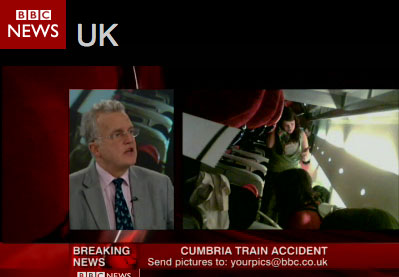From the Economist‘s current Technology Quarterly survey…
WHAT is the best way to make the benefits of technology more widely available to people in poor countries? Mobile phones are spreading fast even in the poorest parts of the world, thanks to the combination of microcredit loans and pre-paid billing plans, but they cannot do everything that PCs can. For their part, PCs are far more powerful than phones, but they are also much more expensive and complicated. If only there was a way to split the difference between the two: a device as capable as a PC, but as affordable and accessible as a mobile phone. Several initiatives to bridge this gap are under way. The hope is that the right combination of technologies and business models could dramatically broaden access to computers and the internet.
Perhaps the best-known project is the one dreamt up by a bunch of academics at the Massachusetts Institute of Technology, in Cambridge. The scheme, called “One Laptop Per Child”, aims to use a variety of novel technologies to reduce the cost of a laptop to $100 and to distribute millions of the machines to children in poor countries, paid for by governments. Nicholas Negroponte, the project’s co-founder, says he is in talks to deliver 1m units apiece to the governments of Argentina, Brazil, Nigeria and Thailand. But across the Atlantic in Cambridge, England, another band of brainy types has cooked up a different approach. They have devised a device that allows one PC to be used by many people at once.
The organisation is called Ndiyo (the Swahili word for “yes”), and was founded by Quentin Stafford-Fraser, a former researcher at AT&T. “We don’t want to have cut-down computers for poor people,” he says. “We want them to have what we have — so we need to find a better way to do it.” The system exploits a little-used feature in operating systems that permits multiple simultaneous users. Ndiyo’s small, cheap interface boxes allow multiple screens, keyboards and mice to be linked to a single PC cheaply via standard network cables.
This allows a standard PC running Linux, the open-source operating system, to be shared by between five and ten people. Computers today are many times more powerful than those of just a few years ago, but are idle much of the time. Ndiyo is returning computing to its roots, to a time when they were shared devices rather than personal ones. “We can make computing more affordable by sharing it,” says Dr Stafford-Fraser, as he hunches over a ganglion of wires sprouting from machines in Ndiyo’s office. In much of the world, he says, a PC costs more than a house. Internet cafés based on Ndiyo’s technology have already been set up in Bangladesh and South Africa. Mobile phones are used to link the shared PCs to the internet…


